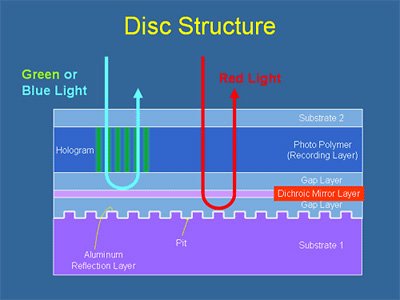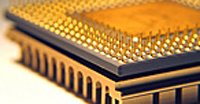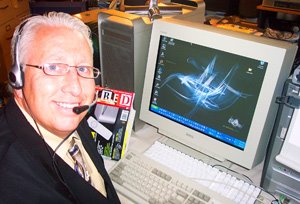Holographic Storage Technology
OPTWARE IS SET TO be the first company to have its holographic storage technology approved by an international standards body. The company's president, Yoshio Aoki, claimed that the company was working with Ecma International to have its specifications finalized.

Optware is developing a technology that enables the storage of between 100GB and 1TB of data, with data transmission speeds of 100Mbit/s to 1Gbit/s on discs that are the same diameter as today's CDs and DVDs.The company also plans to develop a credit card form factor with a capacity of 30GB which will be commercialized after June 2006.
Holographic Versatile Disc (HVD) cartridges with 200GB of capacity per cartridge and the credit card-sized Holographic Versatile Card (HVC) version will be finalized by the committee by the end of June 2006. Specifications for 100GB HVD discs and cases for HVD read-only discs will be finished by the end of December 2006, he said.
The announcement comes the same day as InPhase Technologies', which is developing a rival holographic storage technology, said it plans to ship its first holographic drives by the end of 2006. InPhase is demonstrating its first fully functioning prototype of its Tapestry holographic drive at the 2005 Storage Visions conference in Las Vegas this week.
InPhase's holographic storage media stores data in three-dimensional holograms cut into a polymer material on 13-centimeter discs. The first drives will have a 20Mbit/s data transfer rate, according to the company.
First products using Optware's technology will be the reader/writer devices and the 200GB cartridge-type HVDs for enterprise users. These will be on the market after June 2006, said Yasuhide Kageyama, manager of business development and marketing at Yokohama-based Optware.
Note from DC: The less expensive 100GB discs aimed at home consumers will be on the market as soon as 2007. The company has already signed contracts with one optical disc maker to mass produce HVDs after the specifications are finalized.




















